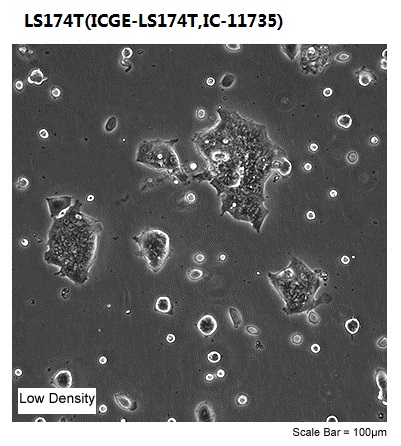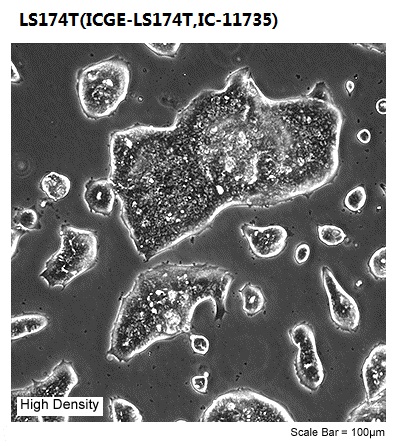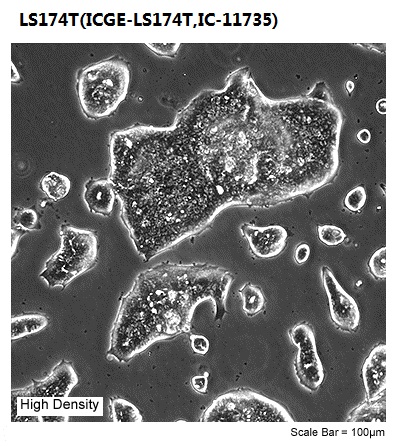


| Organism | Homo sapiens, human |
|---|---|
| Tissue | colon |
| Product Format | frozen |
| Morphology | epithelial |
| Culture Properties | adherent |
| Biosafety Level |
1
Biosafety classification is based on U.S. Public Health Service Guidelines, it is the responsibility of the customer to ensure that their facilities comply with biosafety regulations for their own country. |
| Disease | Dukes'''''''' type B,colorectal adenocarcinoma |
| Age | 58 years |
| Gender | female |
| Ethnicity | Caucasian |
| Storage Conditions | liquid nitrogen vapor phase |
| Disclosure | This material is cited in a US or other Patent and may not be used to infringe the claims. Depending on the wishes of the Depositor, ATCC may be required to inform the Patent Depositor of the party to which the material was furnished. This material may not have been produced or characterized by ATCC. |
| Karyotype | 45,X; one X chromosome missing; no other chromosomal aberrations |
|---|---|
|
|
|
| Derivation | The cell line was established from a Duke''''''''s type B adenocarcinoma of the colon. The tissue was minced and cultured without transfer for 10 months. |
| Clinical Data |
58 years
Caucasian
female
|
| Antigen Expression |
serologically defined colon cancer antigen 3; Homo sapiens, expressed
HLA A2, B13, B50; Blood type O
|
| Oncogene | myc +; myb + ; ras +; fos +; p53 +; sis -; abl -; ros -; src - |
| Genes Expressed |
carcinoembryonic antigen (CEA), interleukin 10 (IL-10), interleukin 6 (IL-6), mucin The production of CEA in the ATCC seed stock was 1944 ng per 10(6) cells in 10 days.
|
| Cellular Products |
carcinoembryonic antigen (CEA)
interleukin 10 (IL-10)
interleukin 6 (IL-6)
mucin
|
| Tumorigenic | Yes |
| Effects |
Yes, in nude mice
(Tumors developed within 21 days at 100% frequency (5/5) in nude mice inoculated subcutaneously with 10(7) cells)
|
| Comments |
LS 174T is a variant of LS 180 (ATCC CL-187) that has been maintained by using trypsin in the subculture protocol. It is more easily subcultivated than that parent line and, like LS 180, it is reported to produce large amounts of carcinoembryonic antigen (CEA). Electron microscopic studies revealed abundant microvilli and intracytoplasmic mucin vacuoles. Ref They are negative for p53 antigen expression, but positive for mRNA expression. LS 174T cells stain positively for cytokeratins. The line is positive for expression of c-myc, N-myc, H-ras, N-ras, Myb, and fos oncogenes. Ref K-ras and sis oncogene expression were not detected. |
| Complete Growth Medium |
The base medium for this cell line is ATCC-formulated Eagle''''''''s Minimum Essential Medium, Catalog No. 30-2003. To make the complete growth medium, add the following components to the base medium: fetal bovine serum to a final concentration of 10%. |
|---|---|
| Subculturing |
Volumes are given for a 75 cm2 flask. Increase or decrease the amount of dissociation medium needed proportionally for culture vessels of other sizes.
Medium Renewal: 2 to 3 times per week |
| Cryopreservation |
Freeze medium: Complete growth medium supplemented with 5% (v/v) DMSO
Storage temperature: liquid nitrogen vapor phase
|
| Culture Conditions |
Atmosphere: air, 95%; carbon dioxide (CO2), 5%
Temperature: 37��C
|


